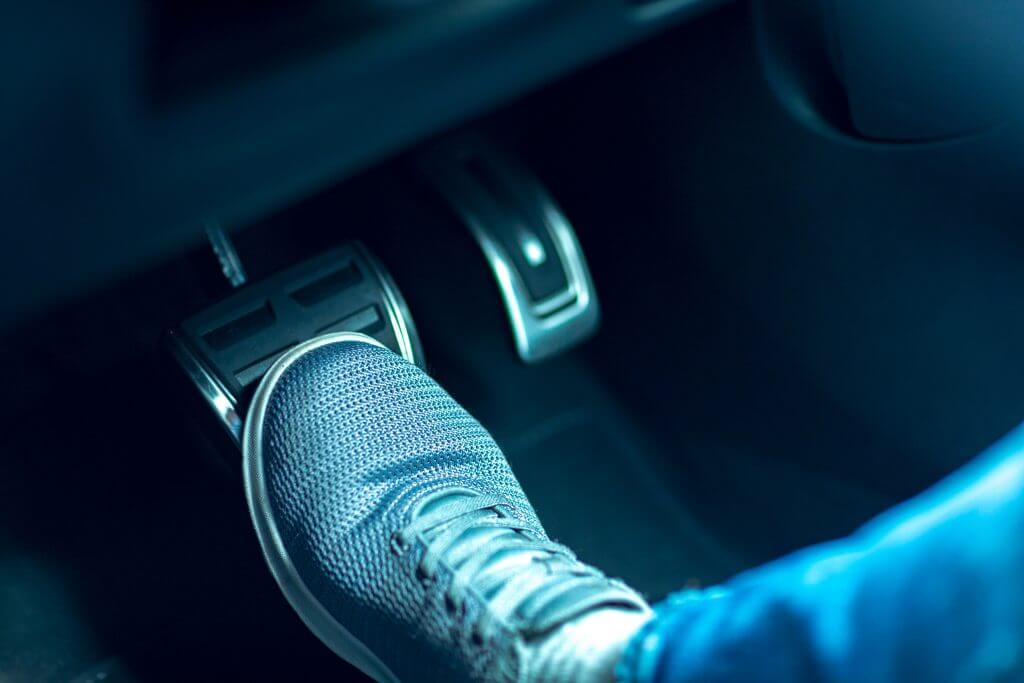The best part about buying a new car (or a newer, low-mileage pre-owned car) is the added peace of mind that comes with the protection of a warranty. There are several warranties available to cover different components of the car, but if you’re wondering “are brakes covered under warranty?” the answer is largely dependent on the age of your vehicle and how many miles it has on it.
Are Brakes Covered Under Warranty?
The wear items of a brake system including the pads, rotors, shoes, and drums aren’t usually covered the car’s warranty, but if you suffer some sort of brake issue or failure on a vehicle less than a year old with fewer than 12,000 miles, the factory might authorize a warranty repair if no abuse or excessive wear is detected upon inspection. While the wear items aren’t covered by the warranty, all other braking components are, and these include parts such as the brake booster, master cylinder, calipers, and more.
What Are Warranties and What Do They Cover?
There are different types of factory warranties that are included with new cars, but they don’t cover wear items such as brake pads and windshield wipers or routine maintenance tasks such as oil changes. To learn what certain warranties do cover, here are some of the most common warranty types:
Basic Warranty
A basic warranty is often referred to as a bumper-to-bumper warranty because it covers defects and repairs from one end of the vehicle to the other. A basic warranty is good for a specific time and/or mileage, but this depends on the year, make, and model of your vehicle. Generally speaking, a common basic warranty extends for three years or 36,000 miles (whichever comes first), while some automakers, such as BMW, extend this basic warranty out to four years/50,000 miles. While bumper-to-bumper warranties don’t typically cover wear items, they will cover all other components.
Powertrain Warranty
A powertrain warranty covers all the components involved in moving a vehicle. This typically includes the engine, transmission, axles, driveshaft, transfer case, and more, but it does not include the brake system. A powertrain warranty is typically longer than a bumper-to-bumper warranty because it covers mechanical parts that should last longer. The exact length of the warranty varies depending on the provider, and Hyundai provides one of the longest factory powertrain warranties with coverage for 10 years or 100,000 miles.
Extended Warranty
An extended warranty is usually something you buy after your initial basic or factory warranty expires. It may cover things like your powertrain and roadside assistance needs. Extended warranties also don’t typically cover normal wear and tear, which is what happens when the brakes don’t work as well over time. An extended warranty, however, may cover other repair needs that could be related to brakes, including the master cylinder or disc brake calipers. An extended warranty may also cover the brake lines, which connect the master cylinder to the brake caliper on each wheel.
Extended warranties may also cover the brakes themselves, but only specific parts. For example, a warranty may cover the brake pedal but not the brake pads. Even warranties that do cover brakes may have specific requirements about when and what they will cover. This may include things like a limited warranty on the brake pads or a manufacturer’s warranty on the parts.
Limited Warranty
A limited warranty is specific to certain automotive parts and usually follows a service appointment. For example, if you pay to have your brakes replaced at your local dealership or mechanic, they may offer a limited warranty that covers their work. This warranty is usually only for a short period of time.
How Do I Know When My Brakes Are Bad?
Checking your brakes is an important preventative maintenance task that you’ll need to complete regularly to maintain the condition and safety of your vehicle.
Even if your warranty covers brakes, most won’t replace your brakes unless they need it. The good news is, it’s simple to check the condition of your brakes. Some signs that you may need new brakes include:
- Screeching noises when you press the brake pedal
- Having to apply more pressure to the brakes to come to a stop
- Not coming to a stop when applying the brakes
- Pulling to one side when applying pressure to the brakes
- Vibrating when driving downhill
These signs may indicate that some parts of your brakes are bad and need repairing. However, the brakes are made up of many parts, including the brake lines and brake calipers. It’s important to repair the correct part to ensure you have safe braking power.
Changing brake pads is an important vehicle maintenance task. It’s always a good idea to check the condition of your brakes at least every six months.
Things To Know About Your Warranty
There are a few important things to know about a vehicle’s warranty:
- Coverage can change. Manufacturers and dealerships may change their warranty over time. However, the change should only apply to people who buy vehicles after the change. It can be helpful to keep a copy of your vehicle’s warranty with you for this reason.
- Your warranty may include roadside assistance. New car warranties often include roadside assistance. This means if your brakes are covered in the warranty, they may also cover the cost of a ride home.
- It’s important to know your warranty requirements. Most warranties require that you maintain routine maintenance and repairs to qualify for warranty repairs. This means you have to keep up with your vehicle’s recommended maintenance schedule.
Because brakes naturally wear down over time, they aren’t typically included in warranties. The cost of replacing brakes is affordable, and some people may be able to complete this project on their own.
Keeping up with routine maintenance, including brake pad and fluid inspections, can help you keep your brakes in good working condition. The FIXD scanner and app can help you track your maintenance needs and avoid costly repairs.

At FIXD, our mission is to make car ownership as simple, easy, and affordable as possible. Our research team utilizes the latest automotive data and insights to create tools and resources that help drivers get peace of mind and save money over the life of their car.














